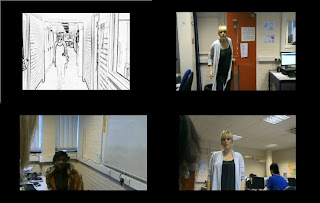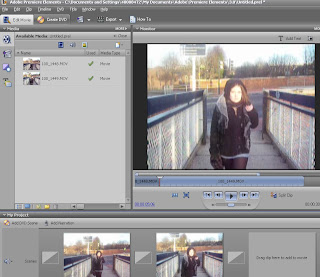Our media product uses and in a way, it also challenges the forms and conventions of it's genre. Upon analysing other psychological thrillers, I gained a good understanding of the conventions used within those texts. For instance, while we did think about creating a psychological drama... By combining the 'psychological' element with the 'thriller' element, it's quite successsful, in raising tension and suspense. Therefore we used that idea in planning our title sequence. Also, other thrillers use the theme of characters with a level of mental frustration. Physical danger is not the focus with psychological thrillers. We based our plot on that idea.
Many "psychological thrillers" place alot of emphasis on their titles. We also decided to place 'Carrie's Rose' (the title) at the end of the sequence, leaving the audience pondering. For example "The Butterfly Effect", a similar psychological thriller movie, also used this technique. Another idea we were inspired by from The Butterfly Effect was the philosophical/informative quote used at the beginning of the title sequence:
"It has been said that something as small as the flutter of a butterfly's wing can ultimately cause a typhoon halfway around the world.
-Chaos Theory"
(as seen below)
Just like our voiceover with the spoken quote, these features tend to add to the mood within the sequence, and gives the audience a greater idea of the storyline...
The Butterfly Effect clip:
Unlike some thrillers, we chose to film in Charlton park, a deserted location at that time of day. This was because we wanted to oppose regular conventions... For example, the psychological thriller Hard Candy. The characters Jeff & Hayley first met in a public place (a very crowded cafe).
For our sequence, we wanted to portray a feeling of being gullible and vulnerable, which meant them both potentially being alone, but together. Carrie was so eager to see her internet lover, she was even willing to meet him alone in an empty park.
Just like all genres, and especially thrillers, props are used to convey meaning and mood/atmosphere. We used the rose as a symbolic item, as well as the costume of the character Carrie, which all forms her character image.
We used conventional shots such as over-the-shoulder to let the audience feel they're a part of the situation.
We borrowed the 'introductory scene' idea from Hard Candy, which is another psychological thriller in the same league as our product. This is when the characters meet for the first time, at the very start of the sequence...
2: How does your media product represent particular social groups?
In our title sequence, we represent 'teenage' girls and pedophiles.
However, within this cliché situation, we changed the classic stereotype of the naive girl, who's very gullable and easily led. Normally young girls are helpless when it comes to strangers/older men. Our male character is represented as mysterious, and we're completely unaware of his appearance, to enfore the idea that you never really know who you're talking to on the internet.
He's very manipulative and strategic in his 'grooming' of the girl. In this sense he's of a stereotypical social group. However, as he has no idea of her agenda, the roles are reversed as HE becomes the vulnerable, naive character. Neither representation is positive as the female character appears to have personal psychological issues. However, this allows her to be ruthless, devious and tactical, therefore this removes the 'power' from the pedophile.
Also, our product represents the rebellious, outcast type. Especially through the female protagonist, she's very much a loner, with her own 'individual' style.
Teenage girl:
-Likes to use online social networking tools.
-Likes all her music, an eclectic mix of sounds.
-Likes to have her own particular style, girly but rebellious. Tom-boy looking, but stylish.
-Likes the colors black and red.

Mysterious older male:
-Likes his hobbies, particularly Photography.
-Lives alone in the city, in a single apartment.
-Uses modern technology, PC's etc.
-Has an unknown style/image.
3: What kind of media institution might distribute your media product and why?
After searching online for different companies which distribute films, keeping in mind that some are independent, some are blockbuster, and could be either British or American or a combination... We decided on one which was generally quite popular and successful, and produces movies similar to our product.

Formed in 1967, New Line Cinema is a major American studio company. This is the type of Media institution we'd choose to distribute our product. Examples of films that were produced with this particular company are:
-The Butterfly Effect
-Final Destination
-The Long Kiss Goodnight
-Friday the 13th
-Se7en (as seen below)
All these movies have gripping storylines, and they're excellently edited pieces of cinema. This production company are responsible for some of the best films, of an eclectic mix of genres, ranging from rom-coms to horror to action, and most importantly, thrillers.
Our product falls into the pyschological thriller genre, therefore NLC would be an ideal company to represent it, based on the other films which they've produced.
Se7en:
A good example of a thriller produced by New Line Cinema. It has an interesting title sequence, and an intelligently thrilling plot.
Trailer:
4: Who would be the audience for your media product?
The audience for our Media product would ideally be anyone over the age of fifteen years old, as the certificate rating will be '15'.
There's no particular gender preference, as both main characters personify male & female stereotypes - which are appealing to both sexes. The type of audience for this product would be people interested in psychology and drama. The group of people attracted to our product would probably be young adults as it wouldn't appeal to the elderly due to it's disturbing storyline. Also, some of the content within the film wouldn't be appropriate for young viewers under the age of 15 either. On the other hand, choosing JUST an '18' rating would potentially mean missing a good chunk of viewers from our target audience, so we chose to be as broad as we can.
A perfect target audience profile:
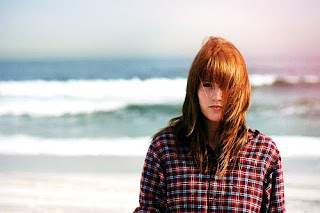
-University student. Female. 18 years old. Studies subjects such as Psychology or Sociology. A frequent internet user, she chats online regularly. Interested in dramas. Listens to a variety of musical genres, ranging from Classical to Alternative Rock to Heavy Metal. Enjoys movie classics, such as One Flew Over the Cuckoo's Nest, Psycho, The Exorcist... But also, more up-to-date titles such as Gothika, The Ring, Donnie Darko, Hard Candy, What Lies Beneath, The Butterfly Effect and Girl, Interrupted (as seen below)
Girl, Interrupted:
A film involving troubled young women, just like in our project. But this focuses mainly on the females within a mental institution. This is a prime example of a movie that focuses on mental illness, personality disorders, psychopaths, suicide and death, which is also aimed at teenage girls. It also has a certificate rating of '15'. It's quite dark and disturbing at times.
Clip:
5: How did you attract/address your audience?
We tried to create a dark and mysterious vibe, through the soundtrack. This was to reflect the thriller genre and it's forms and conventions. We found an Eerie/Ethereal type of feel, in a piece of music we found on the freeplaymusic.com website... (as seen below)
We feel it appeals to the target audience we were aiming for, based on their interest in thrillers and the psychological element.
We used an online photo editing tool to create the title 'Carrie's Rose'... The process (as seen below) on the picnik website shows the experimentation of fonts etc. Mainly we stuck to the color scheme of black & red as it connotes the appropriate ideas regarding the storyline.
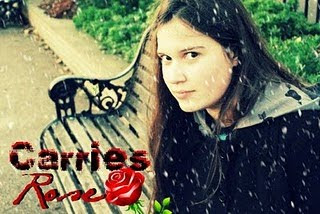
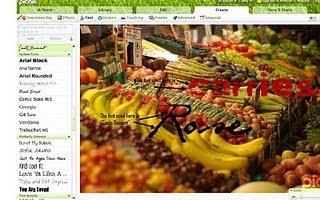
6: What have you learnt about technologies from the process of constructing this product?
First of all, here's a list of everything we used in the process of planning and constructing our sequence:
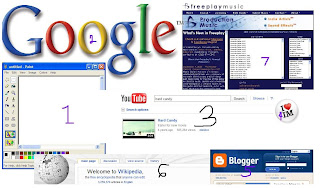
-Desktop PC (for all internet useage, editing, and other programs)
-Microsoft Paint (1) (for mood boards, etc)
-Adobe Premiere Elements (for editing the footage)
-Iloveim.com (4) (for creating the conversation scene)
-Google.com (2) (for all research purposes)
-YouTube.com (3) (for research of title sequences & filming styles/effects)
-Wikipedia.org (6) (for research movie genres/directors etc)
-Blogspot.com (5) (for blogging of the whole sequence and planning)
-Picnik.com (for creating the title/graphics)
-Freeplaymusic.com (7) (for finding the perfect background music)
-Camera/camcorder (for the actual filming, and for documenting different stages in the process, eg. the group using the software/blog)
Throughout the making of our title sequence, we used a number of different programs and features of technology. I feel this process has enabled me to make the most of research and planning time.
I've practised techniques to do with filming, and have also learned alot from the editing stage too, using the software. For example, I learned about fading, transitions, split scenes, black & white effect, etc etc.
Overall I think I've developed my skills in creating Media products, and this will prove very useful for future projects. The physical aspect, as in filming with the camcorder, has definitely helped, in the sense that I've grown confident about approaching this part of the development process.
7: Looking back at your preliminary task, what do you feel you have learnt in the progression from it to the full product?
While carrying out the preliminary task, I feel I've learnt alot about the techniques involved in filming different shots. For example, we practised the match on action shot, which is an important part of Continuity editing. We found this type of cut quite effective in bringing the scene together in a quick way, so the audience isn't aware of the noticeable cutting. As well as that we practised the shot-reverse-shot, which was all about perspectives. It creates the assumption for the audience that the two characters in the scene are facing each other.
The experience with the camera was very useful, as we didn't always get the shots right first time, so we learned the importance of creating the perfect shot.
Overall the tasks were helpful in gaining the basic skills needed to put together the smoothest sequence possible.
Practising the over-the-shoulder shot was quite beneficial, as we used this shot within our actual product, when showing the perspective of the protagonist during the online conversation scene and the park scene also.
I definitely learned some valuable lessons through the preliminary tasks, such as:
-How to keep a camera steady.
-How to get the best results using the zoom effect.
-How to put together cuts on the editing software.
-How to make the most of the time given to film.
Below is a screen capture of the process of filming the different shots...
